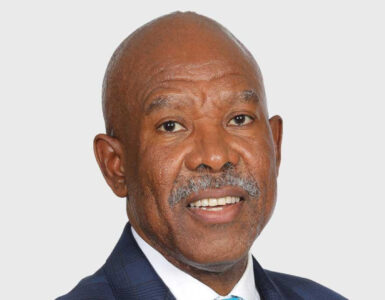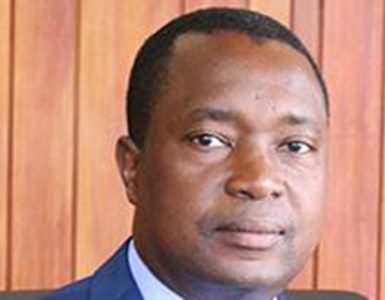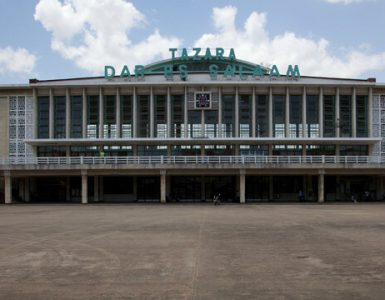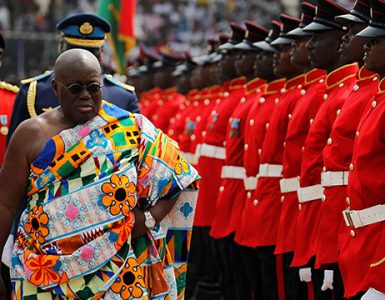After 33 years of latent conflict, in 1994, a three-month genocide broke out. A genocide is defined by the UN as “any of the following acts committed with intent to destroy, in whole or in part, a national, ethnical, racial or religious group, as such: a. Killing members of the group; b. Causing serious bodily or mental harm to members of the group; c. Deliberately inflicting on the group conditions of life calculated to bring about its physical destruction in whole or in part; d. Imposing measures intended to prevent births within the group; e. Forcibly transferring children of the group to another group”. In political science, genocides are not considered as a war because of the disparities between the parties regarding number of deaths and organisation to commit collective violence. However, for our economic analysis, we will still consider it as a war because of the very high number of deaths, which also means a destruction of a part of a production factor.
Neoclassical growth theory predicts that an economy recovers relatively quickly after wars. Alternative models argue that catch up may take a long time, because human capital recovers slowly or countries can be trapped in a low-level equilibrium where conflict and poor performance coexist. In the case of Rwanda, it seems that neoclassical predictions were right given that the economy grew at an average of 7.8% per annum from 2000 to 2017[2]. The country seems to have quite literally rose from the ashes. How did the Rwandan history of conflict affect the country’s economic resilience? Firstly, negative consequences were limited by the strong economic foundations built before the genocide. Secondly, the particularities of a genocide as a conflict type created unique economic consequences. Finally, the successful state-building process had impressive results on the country’s development.
The period after independence from Belgium in 1962 to the genocide in 1994 witnessed stable economic growth. Even though the impact of Rwandan developmental state model and the leadership role played by President Paul Kagame cannot be understated, Kayibanda’s government, (1961 to 1973) followed by Habyarimana’s (1973 to 1994) were development-oriented and have laid strong foundations for the post-genocide economic recovery which led to the current socioeconomic situation.
A government policy of institutionalised inequalities then deprived Rwanda’s economy from one of its assets: the Tutsi former elite[3]. The population, that went from 3.8 million people in 1970, to 7.2 million in 1990, was huge relative to the Rwandan country area and represented an unconditional asset that helped reduce the negative impact of the economic exclusion of the Tutsi[4]. The Hutu were themselves excluded from the state-building process by the Belgium rulers from 1916 to independence, creating indeed a gap in education and skill with the Tutsi[5]. Once in power and taking advantage of the anxiety created within the Hutu population as a result of the 1972 civil war in Burundi, the Kayibanda government established Hutu dominance through quotas to create an “ethnic rebalancing”[6]. It notably claimed the massive attacks against Tutsi in 1973 as a rebalancing in reaction to Tutsi having surpassed the quota they were allocated in various aspects of public life, following a new policy in 1969 excluding the Tutsi from the civil service and from state. That policy was extended to include “regional balancing”, particularly under Habyarimana presidency. Development projects were concentrated in the President’s prefecture of origin, and by the mid-1980s, people from the region were dominating leadership of public enterprises[7]. It actually had a positive impact on development, probably because it fully involved the Hutu, the majority of the population that had been limited for the last 45 years in the economy. Rwanda was then the less unequal African country and the part of the population with no education went from 61.3% in 1978 to 40.1% in 1992[8].
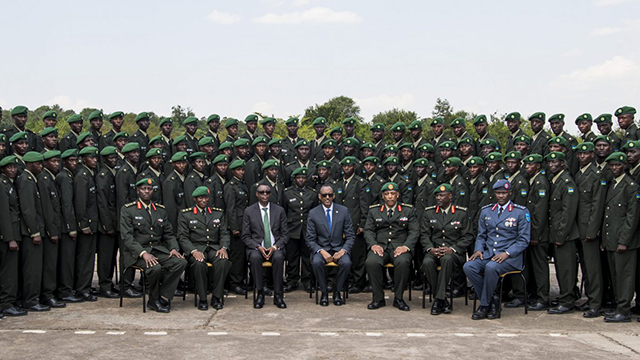
The policy in favour of Hutu people caused a massive exodus of Tutsi people which contributed to increase the resources per capita. Before 1993, an estimated 600,000 Rwandans, mainly Tutsi, were living in neighbouring countries[9]. Meanwhile Rwanda had 6.3 million inhabitants and the two pre-genocide governments violently closed borders to returnee candidates[10]. This slowed down population growth, limited population density and alleviated the economic side effects of land scarcity. However, population density was the highest in Africa in 1991/1992 at 272 people per square kilometre[11]. Hence, arable land had only been accessible through patronage by Hutu senior officials since the independence[12]. Many landless people migrated to urban areas in search of work, causing a higher incidence of unemployment and poverty in towns, with a poverty rate at 58.9% in 2000[13]. Tutsi’s killings offered opportunities for elimination of those considered on the wrong side of the political and social divide, who had valuables worth stealing. Killings and the exodus contributed to a demographics decline which made mechanically more resources available for those who stayed[14].
Moreover, the ruling party of Habyarimana, the Mouvement Révolutionnaire National pour le Développement (MRND) which was founded in 1973, was in control every aspect of social, political and economic life until 1994. This is how the regime contributed to the country development in some aspects, considering the country’s intrinsic disadvantages such as being landlocked, highly populated, natural-resource-poor and the poor performance of its neighbours[15]. At independence in 1962, only two countries in the world had less income per capita than Rwanda at USD 200 (in constant 2000 prices); by 1987, per capita income rose to USD 250[16]. Moreover, the diversification of the economy had been achieved under pre-genocide regimes: agriculture’s contribution to GDP declined from 74.8% in 1965 to 32.5% in 1990[17].
International support to the pre-genocide government contributed largely to economic growth as well as to the structural debt of Rwanda. When the price of coffee collapsed in 1988, the country experienced balance of payment problems since the commodity was the main source foreign currency for the country[18]. The World Bank, supported by international donors, offered an emergency funding package, which helped to avoid recession, and in return the government implemented a Structural Adjustment Programme of the economy in 1991[19].
When the plane carrying President Habyarimana was shot down in April 1994, the civil war between the Tutsi Rwandan Patriotic Front (RPF) and the Hutu government, that started in 1990, intensified[20]. It eventually led to the genocide of Tutsis by Hutu extremists[21]. By the end of June 1994, the RPF had taken control of the country and put an end to the ethnic cleansing of Tutsis. Relative peace was established[22]. However, 1.0 million people died and 2.0 million sought refuge in neighbouring countries[23]. Property, infrastructure and resources such as livestock had been severely affected by the destruction of the conflict. A high incidence of rape contributed to the spread of HIV/AIDS with around 20,000 adults newly infected per year from 1991 to 1996[24].

In general, different factors can impact the speed of economic recovery and post-conflict reconstruction, such as the type of damages caused, or the identity of parties involved. From an economic perspective, labour, as a key input factor, was the most affected in the Rwandan genocide since educated Tutsi people were most likely to die[25]. However, that did not severely destabilise economic growth due to a high unemployment rate at 23.0% and the large labour force available in 1994[26]. One could easily expect that the scale of killings and destructions would have adversely affected the economy and development of the country for a generation or two. The 35.2% economic growth rate of 1995 was driven by the reconstruction starting from a very low base in 1994. The fact that Rwanda managed to sustain its economic growth at an annual average of 8.3% from 1996 to 2005 is more astounding[27]. Before the 2001 crisis, the country had almost reached its pre-genocide level of GDP.
The genocide also affected the structure of the Rwandan economy. The large drop in the population did not have a significant negative impact on value added of agriculture in GDP because this sector requires massive unskilled workforce which was abundant in Rwanda. It rose from 32.9% of the GDP from 1990 to 1993, to 42.9% from 1995 to 2000[28]. The national economy recovered by relying mainly on the agriculture.
However, the situation was critical from a development perspective in 1994 because the majority of civil servants had left the country, leaving public services such as health and education non-functional[29]. Meanwhile literacy rates declined sharply with 29.5% of the relevant age group having completed primary school in 1999 while it was 46.5% in 1992[30]. In addition, all regions had not been impacted equally by the conflict by the loss in human capital. Areas that experienced maximum violence in 1994 had 36.0% lower consumption levels in 2000 than sectors that experienced no conflict[31]. The civil war between Habyarimana’s regime and the RPF raging in the North Eastern and Central provinces caused mainly indirect deaths due to various factors including limited access to food and health care and therefore mainly killed people that were not part of the labour force[32]. Whereas the genocide, that led to mass killings in the South of Rwanda, mainly targeted active educated Tutsi males on purpose. Therefore, the genocide should have had a more severe economic impact[33].
Lack of immediate international financial support due to limited political support was another challenge that the new government of Rwanda had to overcome in 1995. France, as an ally of the former regime, was determined to undermine the new government by using its power to limit Rwanda’s access to multilateral aid and development organisations. For example, resources mobilised in the early days by international actors were redirected towards relief activities in favour of Congo-based refugees, among them perpetrators and executors of the Rwandan genocide. A few donors provided support that eventually enabled the new Rwandan government to rebuild the state[34]. Nonetheless, the lack of international financing and aid contributed to making Rwanda more self-reliant. Aid as a percentage of government revenue dropped from 85.0% in 2000 to an average of 40.6% from 2005 to 2015, before stabilising at an average of 18.0% from 2015 to 2019[35]. Regionally, Kigali’s support of the M23 rebel group in the Democratic Republic of Congo (DRC) has had negative consequences on diplomatic relations. This has also affected Rwanda’s appeal to international finance, which is still a key source of funding for Rwanda’s development initiatives despite its economic diversification[36]. Economic growth dipped from 8.8% in 2012 to 4.7% in 2013 after several top European donors reduced or redirected budgetary support the same year due to Rwanda’s suspected support for the M23 in the Republic Democratic of Congo[37].
Nowadays, Rwanda is commonly referred to as a good example of economic development and political resilience. The country is also one of the most noted global and continental examples of fast economic recovery and successful post-war reconstruction. For example, the World Bank awarded the country the Top Reformer for Business in 2010[38]. The political tensions were stabilised very soon after the genocide due to a strong state-building effort instigated by the RPF from 1995, which led to efficient technocratic governance[39]. Two years after the genocide, Rwanda had territorial and military security structures in place; its judicial system was re-established; and the government mobilised domestic resources through effective tax administration[40].
The 2003 Constitution guarantees power-sharing through “national unity” and “consensus”[41]. An RPF led coalition currently holds 76.0% of seats in the parliament’s Chamber of Deputies, with the remaining seats practically supportive of the regime. Paul Kagame first became president of the RPF and Rwanda in 2000 and has since won re-election with over 90.0% of the popular vote in every election. An amendment to the constitution in December 2015 allowed Kagame to serve a third as President when he was re-elected in August 2017. Free political expression is severely limited in order to end the “ideology of genocide” and “tribalism” and the government is determined to leave the history of institutionalised discrimination behind[42].
This post-genocide political stability and the national unity that has been carefully built since 1994 contributed to economic growth in Rwanda averaging 14.0% per year over the past decade[43]. The investor-friendly policy programmes defined in “Vision 2020”, which has not met any opposition, have also contributed to Rwanda’s growth and development. Through “Vision 2020”, Kagame’s regime aims to transform Rwanda’s low-income, agrarian-based economy into one that is services-oriented and middle-income by 2020[44]. “Vision 2020” is mainly a program of privatisation and liberalisation which makes Rwanda appealing and a star of the Bretton Woods’ institutions and of international finance[45].
Despite some tensions with its neighbours, Rwanda is a major proponent of regional integration through the East African Community (EAC) since 2007. In 2017, Rwanda’s exports to the EAC increased by 21.0% to USD 138.9 million (2016: USD 114.6 million)[46]. Regional Integration and investor confidence due to its political stability have made Rwanda an appealing business-centre in the East African region. Rwanda was ranked 41st out of 190 countries in 2018 in terms of “Ease of doing business” and is only second in Africa after Mauritius[47]. Rwanda’s economic growth has also been accompanied by development in terms of improved living condition. The infant mortality rate is current at 38.0% per live births, meanwhile the sub-Saharan Africa average is 51.0%[48]. The primary education completion rate is currently 67.0% compared to the average of 32.0% from 2000 to 2004[49].
However, Rwanda had the highest inequality in the East African region according to its Gini coefficient[50]. This may be inherited from the institutionalised inequalities implemented by the Kayibanda and Habyarimana regimes. These inequalities add to the ethnic tensions and have forced the government to give particular attention to the issue of land access and distribution. The massive return of Rwandans from exile could have been an economic opportunity. However, it made the issue of land access and tenure more challenging for the development of the country than before. In 2004 the National Land Policy was issued to establish appropriate land administrative systems and strengthen security of tenure for all Rwandans through documentation of holdings for legal mortgage[51]. The land policy is a priority in order to guarantee political stability and sustainable economic development, since Rwanda intends on becoming a service-oriented economy.
Rwanda’s liberal economic model can be considered as a success, since it managed to develop the country. But the current economic performance could not have been achieved without building on a long history of development-oriented policy. Surprisingly, conflict and tensions did not have a strong negative impact on the economy. Instead the history of conflict and political instability has contributed to the country’s resilient, self-reliance and ability to adapt.
[1] NURC 2016. Unity and Reconciliation Process in Rwanda, National Unity and Reconciliation Commission: Kigali. pp.: 12-17. Available At: http://www.nurc.gov.rw/ [Last Accessed: 25 September 2018]; UN 2014. Rwanda, A Brief History of the Country, on the United Nations Website, viewed on 12 August 2018, from http://www.un.org/.
[2] NISR 2018a. GDP National Accounts, 2017, National Institute of Statistics of Rwanda: Kigali. Available At: http://www.statistics.gov.rw/ [Last Accessed: 2 October 2018].
[3] NURC 2016. Unity and Reconciliation Process in Rwanda, ibid.
[4] NISR 2018b. Rwanda Data Portal, on the National Institute of Statistics of Rwanda Website, viewed on 10 October 2018, from http://rwanda.opendataforafrica.org/.
[5] Golooba-Mutebi, F. 2008. Collapse, War and Reconstruction in Rwanda. An Analytical Narrative on State-Making, Crisis States Research: London. Available at: https://assets.publishing.service.gov.uk/.
[6] Tutsi-dominated military massacred thousands of Hutu elites. For more information on the Hutu repression in Burundi and its repercussion on Rwanda / Burundi relations, refer to: PoRoB 2017. Agression du Rwanda contre le Burundi, Presidency of the Republic of Burundi: Gitega. Available At: http://www.presidence.gov.bi/ [Last Accessed: 25 September 2018].
[7] Ruhengeri in the North; Golooba-Mutebi, F. 2008. Collapse, War and Reconstruction in Rwanda. An Analytical Narrative on State-Making, ibid.
[8] WBG 2018a. GINI Index (World Bank Estimate), on the World Bank Group Website, viewed on 10 October 2018, from https://data.worldbank.org/; NISR 2012. Educational Characteristics of the Population, National Institute of Statistics of Rwanda: Kigali. Available At: http://www.statistics.gov.rw/ [Last Accessed: 5 February 2019].
[9] AI 2004. Rwanda Protecting their Rights: Rwandese Refugees in the Great Lakes Region, Amnesty International: Nairobi. Available At: https://www.amnesty.org/ Last Accessed: 5 February 2019]; Mainly in Burundi. In 1963, groups of refugees based in Burundi and Uganda staged an armed incursion. The government reacted with a campaign to eliminate what remained of Tutsi political activity causing a massive exodus. The same happened in 1967.
[10] NISR 2018b. Rwanda Data Portal, ibid.; Any Tutsi’s attempt to return was violently repressed, and Rwanda’s official position was issued in 1986: the country was not able to cope with a massive influx of returnees.
[11] NISR 1994. Demographic Survey and Health 1992, National Institute of Statistics of Rwanda: Kigali. Available At: http://microdata.statistics.gov.rw/ [Last Accessed: 5 February 2019].
[12] Verwimp, P. 2006. ‘Peasant Ideology and Genocide in Rwanda under Habyarimana.’, in S.E. Cook (ed.), Genocide in Cambodia and Rwanda, New Perspectives, Routledge: Abingdon and New York. Available At: https://www.ethz.ch/ [Last Accessed: 27 January 2019].
[13] WBG 2018b. Poverty Headcount Ratio at $1,90 a Day (2011 PPP), World Bank Group. Available At: https://data.worldbank.org/: [Last Accessed: 29 September 2018]; NISR 2018c. The Fifth Integrated Household Living Conditions Survey 2016/17, National Institute of Statistics of Rwanda: Kigali. Available At: http://www.statistics.gov.rw/ [Last Accessed: 5 February 2019].
[14] Jefremovas, V. 2002. Brickyards to Graveyards: From Production to Genocide in Rwanda, State University of New York Press: New York.
[15] Malunda, D. and Musana, S. 2012. Rwanda Case Study on Economic Transformation, Institute of Policy Analysis and Research: Kigali. Available At: http://ipar-rwanda.org/ [Last Accessed: 27 January 2019].
[16] Malunda, D. and Musana, S. 2012. Rwanda Case Study on Economic Transformation, ibid.; Porter, M.E., Miller, K., McCreless, M. and Carlsson, K. 2006. Rwanda: National Economic Transformation, Harvard Business School: Boston. Available At: https://hbr.org/ [Last Accessed: 27 January 2019].
[17] WBG 2018c. Agriculture, Forestry, and Fishing, Value Added (% of GDP), on the World Bank Group Website, viewed on 27 January 2019, from https://data.worldbank.org/.
[18] Kamola, I.A. 2007. ‘The Global Coffee Economy and the Production of Genocide in Rwanda’, Third World Quarterly, Vol. 28, No. 3, pp.: 571-592. Available At: https://www.jstor.org/ [Last Accessed: 27 January 2019].
[19] Storey, A. 2001. ‘Structural Adjustment, State Power and Genocide: The World Bank and Rwanda’, Review of African Political Economy, Vol. 28, No. 89, pp.: 365-385. Available At: https://www.jstor.org/ [Last Accessed: 27 January 2019].
[20] UN 2014. Rwanda, A Brief History of the Country, ibid.
[21] UN 2014. Rwanda, A Brief History of the Country, ibid.
[22] UN 2014. Rwanda, A Brief History of the Country, ibid.
[23] RoR 2017. History, on the Republic of Rwanda Website, viewed on 5 February 2019, from http://gov.rw/home/; Kessler, P. and Boldrini, L. 2004. A Decade After Genocide, Rwandans Return Home to Reconcile and Rebuild, on the United Nations High Commission for Refugees Website, viewed on 16 October 2018 from http://www.unhcr.org/.
[24] WBG 2018d. Adults (Ages 15+) Newly Infected with HIV, on the World Bank Group Website, viewed on 29 September 2018, from https://data.worldbank.org/.
[25] de Walque, D. and Verwimp, P. 2010. ‘The Demographic and Socio-economic Distribution of Excess Mortality During the 1994 Genocide in Rwanda’, Journal of African Economies, Vol.19, Issue 2, pp.: 141-162. Available At: https://doi.org/ [Last Accessed: 27 January 2019].
[26] NISR 2018a. Rwanda Data Portal, ibid.
[27] Malunda, D. and Musana, S. 2012. Rwanda Case Study on Economic Transformation, ibid.
[28] WBG 2018c. Agriculture, Forestry, and Fishing, Value Added (% of GDP), ibid.
[29] Golooba-Mutebi, F. 2008. Collapse, War and Reconstruction in Rwanda. An Analytical Narrative on State-Making, ibid.
[30] WBG 2018e. Primary Completion Rate, Total, (% of Relevant Age Group), on the World Bank Group Website, viewed on 29 September 2018, from https://data.worldbank.org/.
[31] Serneels, P. and Verpoorten, M. 2012. ‘The Impact of Armed Conflict on Economic Performance: Evidence from Rwanda’, Journal of Conflict Resolution, Vol. 59, Issue 4, pp.: 555-592. Available At: https://doi.org/ [Last Accessed: 27 January 2019].
[32] Verpoorten, M. 2009. ‘Household Coping in War- and Peacetime: Cattle Sales in Rwanda, 1991-2001’, Journal of Development Economics, Vol. 88, Issue 1, pp.: 67-86. Available At: https://doi.org/ [Last Accessed: 27 January 2019].
[33] de Walque, D. and Verwimp, P. 2010. ‘The Demographic and Socio-economic Distribution of Excess Mortality During the 1994 Genocide in Rwanda’, ibid.
[34] Golooba-Mutebi, F. 2008. Collapse, War and Reconstruction in Rwanda. An Analytical Narrative on State-Making, ibid.
[35] AA, 2011. Ending Aid Dependency, ActionAid: Johannesburg. Available at: http://www.actionaid.org/ [Last Accessed: 29 September 2018]; Tumwebaze, P. 2016. Domestic Revenue to Finance 62% of Budget, on The New Times Website, viewed on 15 October 2018, from https://www.newtimes.co.rw/; MFEP 2006. Budget Execution Report for the Fiscal Year 2005, Ministry of Finance and Economic Planning: Kigali. Available At: http://www.minecofin.gov.rw/ [Last Accessed: 5 February 2019]; MFEP 2007. Fiscal Performance in 2006, Ministry of Finance and Economic Planning: Kigali. Available At: http://www.minecofin.gov.rw/ [Last Accessed: 5 February 2019]; MFEP 2008. Fiscal Performance in 2007, Ministry of Finance and Economic Planning: Kigali. Available At: http://www.minecofin.gov.rw/ [Last Accessed: 5 February 2019]; MFEP 2009. Budget Execution Report for the Year 2008, Ministry of Finance and Economic Planning: Kigali. Available At: http://www.minecofin.gov.rw/ [Last Accessed: 5 February 2019]; MFEP 2010. Budget Execution Report for the Fiscal Year 2009/10, Ministry of Finance and Economic Planning: Kigali. Available At: http://www.minecofin.gov.rw/ [Last Accessed: 5 February 2019]; MFEP 2011. Budget Execution Report for the Fiscal Year 2010/11, Ministry of Finance and Economic Planning: Kigali. Available At: http://www.minecofin.gov.rw/ [Last Accessed: 5 February 2019]; MFEP 2012. Budget Execution Report for the Fiscal Year 2011/12, Ministry of Finance and Economic Planning: Kigali. Available At: http://www.minecofin.gov.rw/ [Last Accessed: 5 February 2019]; MFEP 2013. Budget Execution Report for the FY 2012/13, Ministry of Finance and Economic Planning: Kigali. Available At: http://www.minecofin.gov.rw/ [Last Accessed: 5 February 2019]; MFEP 2014. Budget Execution Report for the Fiscal Year 2013/14, Ministry of Finance and Economic Planning: Kigali. Available At: http://www.minecofin.gov.rw/ [Last Accessed: 5 February 2019]; MFEP 2015. Budget Execution Report for the Fiscal Year 2014/15, Ministry of Finance and Economic Planning: Kigali. Available At: http://www.minecofin.gov.rw/ [Last Accessed: 5 February 2019]; MFEP 2015. The National Budget: A Citizen’s Guide for 2015/16, Ministry of Finance and Economic Planning: Kigali. Available At: http://www.minecofin.gov.rw/ [Last Accessed: 5 February 2019]; MFEP 2016. The National Budget: A Citizen’s Guide for 2016/17 Budget, Ministry of Finance and Economic Planning: Kigali. Available At: http://www.minecofin.gov.rw/ [Last Accessed: 5 February 2019]; MFEP 2017. The National Budget: A Citizen’s Guide for 2017/18 Budget, Ministry of Finance and Economic Planning: Kigali. Available At: http://www.minecofin.gov.rw/ [Last Accessed: 5 February 2019]; MFEP 2018. The National Budget: A Citizens’ Guide for 2018/19 Budget, Ministry of Finance and Economic Planning: Kigali. Available At: http://www.minecofin.gov.rw/ [Last Accessed: 5 February 2019].
[36] UNSC 2012. Letter Dated 12 November 2012 from the Chair of the Security Council Committee Established Pursuant to Resolution 1533 (2004) Concerning the Democratic Republic of the Congo Addressed to the President of the Security Council, United Nations Security Council: New York. Available At: https://digitallibrary.un.org/ [Last Accessed: 27 January 2019].
[37] NISR 2018d. GDP National Accounts, 2017, ibid.; Smith, D. 2012. EU Partially Freezes Aid to Rwanda, on the Guardian Website, viewed on 2 October 2018, from https://www.theguardian.com/.
[38] IFC 2010. Rwanda Top Business Reformer, on the International Finance Corporation Website, viewed on 15 October 2018, from https://www.ifc.org/.
[39] Reyntjens, F. 2013. Political Governance in Post-Genocide Rwanda, Cambridge University Press: Cambridge.
[40] Golooba-Mutebi, F. 2008. Collapse, War and Reconstruction in Rwanda. An Analytical Narrative on State-Making, ibid.
[41] GRR 2015. The Constitution of the Republic of Rwanda of 2003 Revised in 2015, Government of the Republic of Rwanda: Kigali. Available At: http://www.parliament.gov.rw/ [Last Accessed: 27 January 2019].
[42] Straus, S. 2006. The Order of Genocide: Race, Power, and War in Rwanda, Cornell University Press: Ithaca.
[43] NURC 2016. Unity and Reconciliation Process in Rwanda, ibid.; NISR 2018d. GDP National Accounts, 2017, ibid.
[44] GRR 2012. Rwanda Vision 2020: Revised 2012, Government of the Republic of Rwanda: Kigali. Available At: http://www.minecofin.gov.rw/ [Last Accessed: 30 September 2018].
[45] See IMF 2015. Rwanda: Taking on the Future, Staying Ahead of the Curve by Christine Lagarde, on the International Monetary Fund Website, viewed on 29 September 2018, from https://www.imf.org/.
[46] NISR 2018e. Formal External Trade in Goods: Third Quarter 2018, National Institute of Statistics of Rwanda: Kigali. Available At: http://www.statistics.gov.rw/ [Last Accessed: 5 February 2019].
[47] WBG 2018f. Doing Business 2018: Reforming to Create Jobs, World Bank Group: Washington, D. C. Available At: http://www.doingbusiness.org/ [Last Accessed: 27 January 2019].
[48] WBG 2018g. Mortality Rate, Infant (per 1,000 Live Births), on the World Bank Group Website, viewed on 29 September 2018, from https://data.worldbank.org/.
[49] WBG 2018e. Primary Completion Rate, Total, (% of Relevant Age Group), ibid.
[50] WBG 2018a. GINI Index (World Bank Estimate), on the World Bank Group Website, viewed on 10 October 2018, from https://data.worldbank.org/.
[51] GRR 2004. National Land Policy, Government of the Republic of Rwanda: Kigali. Available At: https://rema.gov.rw/ [Last Accessed: 27 January 2019].


